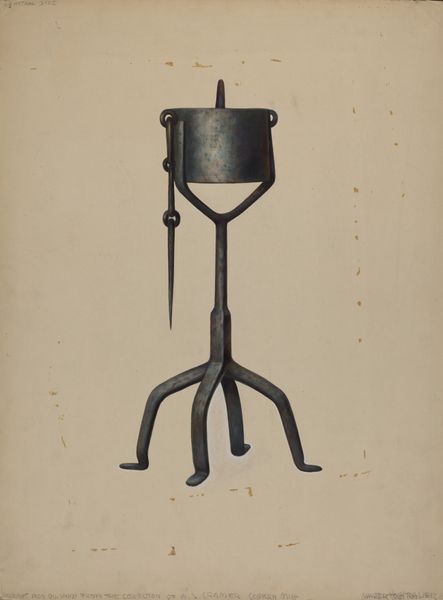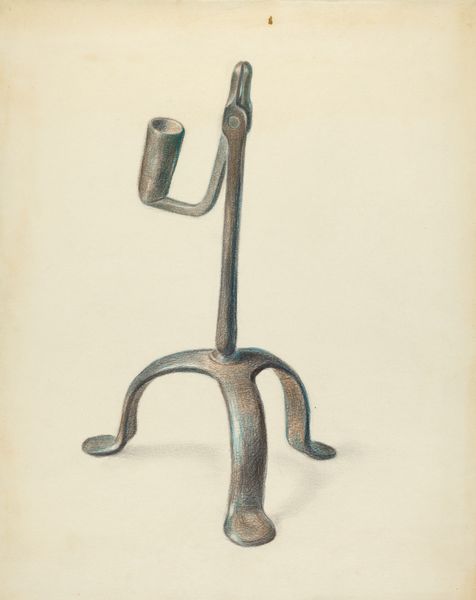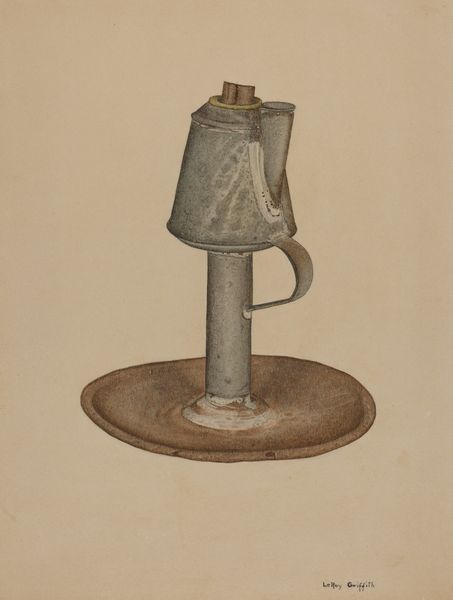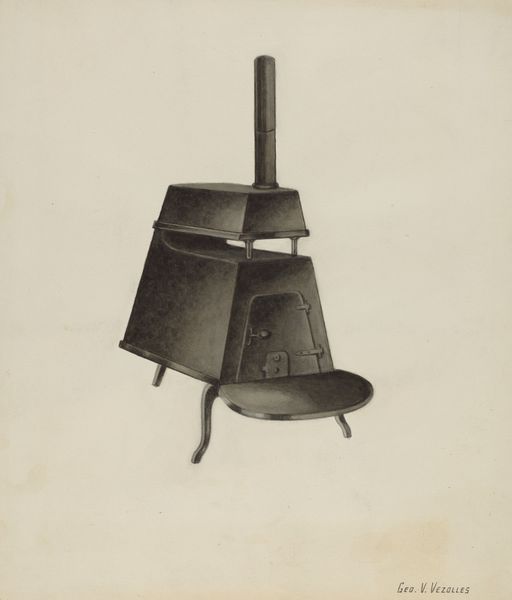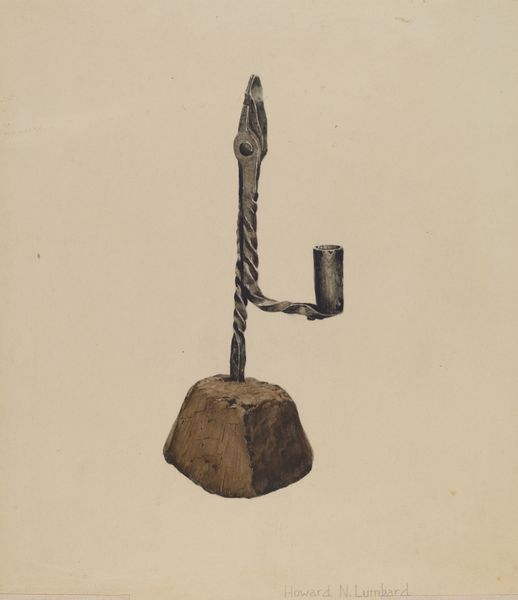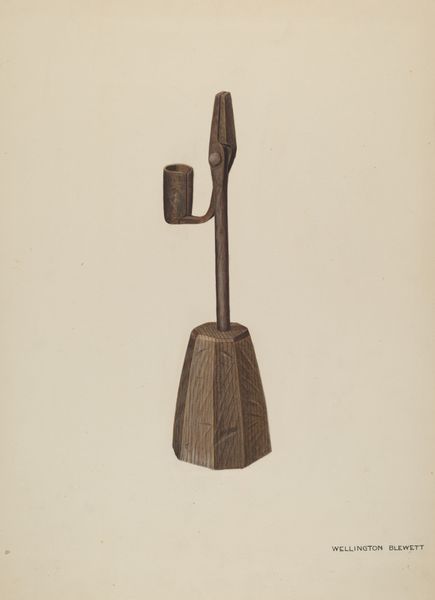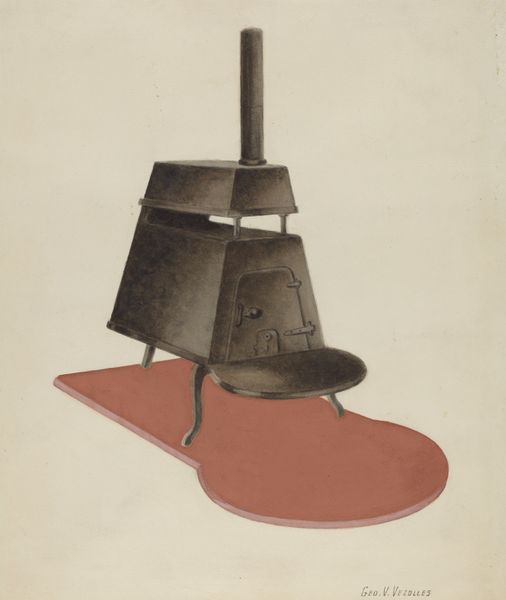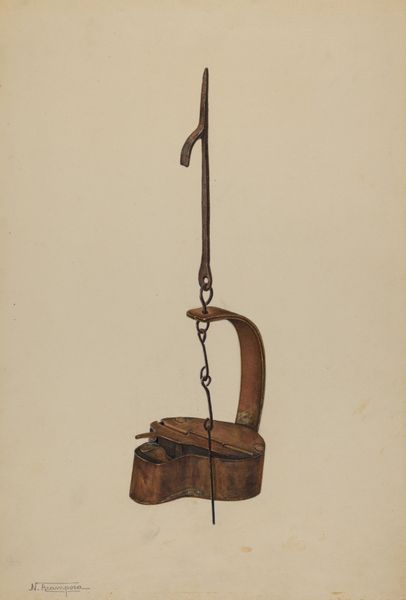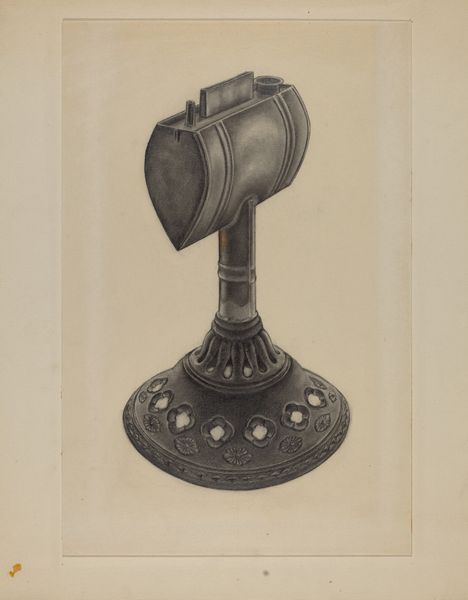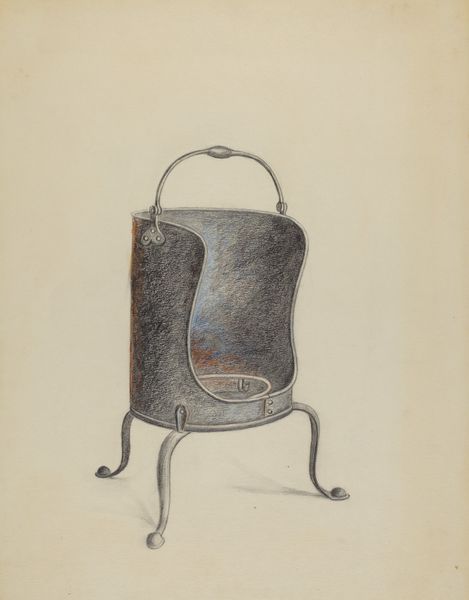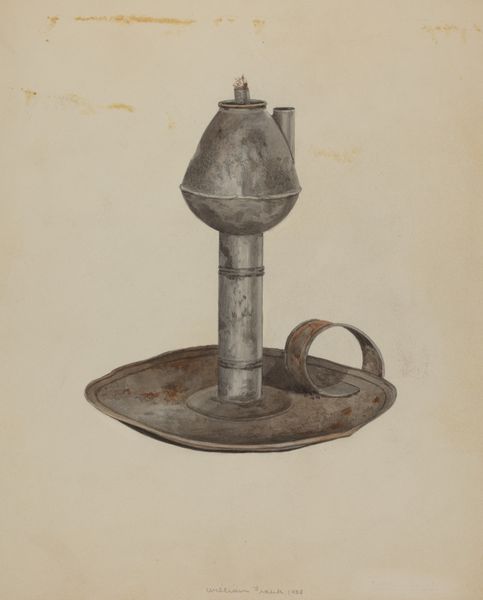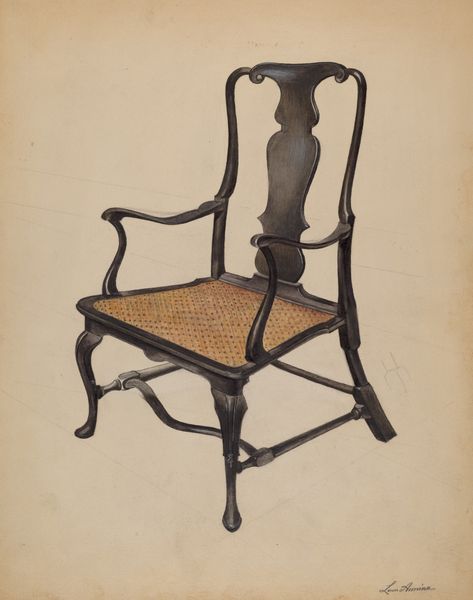
drawing, pencil
#
drawing
#
pencil drawing
#
pencil
#
academic-art
#
realism
Dimensions: overall: 36.9 x 27.8 cm (14 1/2 x 10 15/16 in.) Original IAD Object: 8" high; 4 3/8" wide
Copyright: National Gallery of Art: CC0 1.0
Curator: This is Helen Hobart’s pencil drawing, "Pennsylvania Fat Lamp," dating from around 1941. Editor: It’s surprisingly delicate for a rendering of something that appears quite industrial and utilitarian. I find the composition immediately striking in its geometric simplicity. Curator: It's a testament to the role that everyday objects, particularly those associated with labor and domestic life, can play in understanding a community's cultural values during the mid-20th century. The “fat lamp” references Pennsylvania’s industrial past. Think about its relevance in a period defined by war, when resourcefulness in civilian life became critical. Editor: Focusing on the visual aspects, there is incredible attention paid to the modulation of light and shadow. I notice how the gradations of gray create volume and define the forms, emphasizing its textures from its sturdy base to the lip of the vessel. Curator: That careful realism speaks volumes, especially considering the subject is an oil lamp and the drawing was created right before America’s total involvement in the war effort. These lamps enabled people to extract every last bit of usable fat and create their own sources of light in darker times, allowing households to avoid waste. The act of depicting it endows this object with historical weight and highlights a community's self-sufficiency and adaptability in the face of adversity. Editor: Yes, the subtle variations in the pencil strokes suggest a deep observation. There's a clear connection to artistic traditions focused on realistic representation, such as academic art or even realism. These movements value verisimilitude in rendering subjects. In the interplay between form and texture lies much of its visual intrigue, its formal qualities offering a quiet yet profound statement. Curator: Absolutely. Hobart asks us to consider the unglamorous aspects of life under economic pressure—an era in which communities embraced reuse culture and actively strived for a more sustainable everyday existence, thus embodying the intersection between resource management and socio-economic necessities. Editor: Studying how such details of everyday existence in 2D mediums provides endless interpretative possibilities... fascinating. Curator: A modest still-life perhaps, but it really reflects an era defined by its blend of resourcefulness and industrial history, wouldn't you say?
Comments
No comments
Be the first to comment and join the conversation on the ultimate creative platform.
